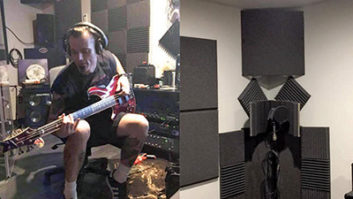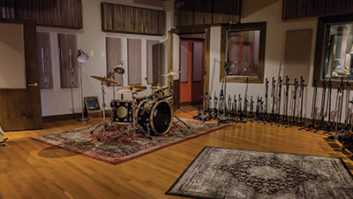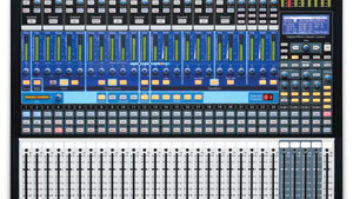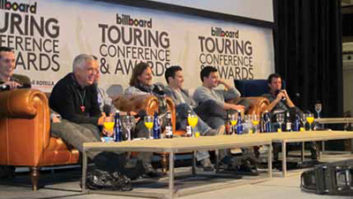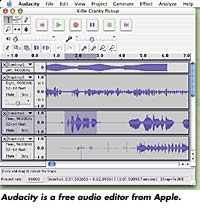
It’s December, and Santa has once again failed to take your requestfor a refurbished ATR-100 seriously. Well, I can’t blame him, but I cancontinue our discussion of mostly free Open Source stuff that’s usefulto audio geeks.
Let’s begin by assuming that we want to put together an Open Sourceaudio workstation. Fine and good, but most current mouse jockeys recoilin horror when presented with a text-only user interface. Text only?Yup! Lurking underneath all modern, post-Macintosh operating systems isa purely text-driven computer; you see, a graphical user interface, orGUI, is for humans and certainly not for the poor microprocessor doingall of the work. There are many Open Source GUIs out there that lay ontop of raw Open Source operating systems, including GNOME, a mature buthomely choice, and KDE, a particularly nice, integratedenvironment.
Once you have a GUI, you can put together a workstation. Take yourpick of Ardour, Audacity, ReZound, Snd and Sweep (i.e., the “bigfive”). There are also a bunch of simple sound file editors tonoodle with, including DAP, GLAME, GNUsound, Kwave, LAMP, MiXViews andWaveSurfer. DAP is a RAM-based editor, while GLAME and Kwave areGUI-specific editors (for the GNOME and KDE environments,respectively), but the remainder are disk-based and independent of GUI.All of these editors run under Linux and offer several flavors of Unix,including BSD, IRIX and Mac OS. They vary as to sound card support, butthat’s primarily an OS and driver issue (see “Open SourcePlugs” sidebar). These simple editors are largely butt-ugly, butthe big five are fairly sweet and include some nice features, includingvisual analysis tools and object-oriented signal processing. DavePhillips, author of The Book of Linux Music & Sound,suggests ecasound. “It’s a text-based DAW, very complete andpowerful. There’s a nicely evolving GUI available for it, too, calledTkEca.”
Ardour, the number two editor in popularity, is a good example of anOpen Source DAW that runs with RME or other quality hardware choices.Though Ardour is free, Paul Davis, the lead developer, also providesservices such as turnkey systems that are built to order. Davis’ takeon an OSS-based DAW is that he has “…complete control overthe OS when I use Linux. When I build a box to run my digital audioworkstation, I don’t have to accept whatever Apple or MS feels is theright kernel configuration. I can include additional third-party kernelpatches, drop extraneous stuff, do anything I need to make sure thatyou get a box that is completely optimized for professionalaudio.”
Of course, if you’re good enough, you can do the same thing with OSX/Darwin, POSIX or BSD, but that’s not Davis’ point. He says,“Digidesign won’t even certify most Wintel systems for use withPro Tools, and every noncustom DAW maker recommends using a dedicated,stripped-down system for their products. People either can’t afford ordon’t want to do that, and this contributes to the instabilities theyface. Most audio practitioners make so little money that they can’tafford not to fully utilize a relatively large capitalexpense.”
Another less-obvious advantage of the strategic use of Open Sourcein your business is its potential for virtual immortality. Audiocompanies come, go and get absorbed by multinationals, but Open Sourcecode is freely distributed, which allows for continued maintenance anddevelopment without its original creators.
Though OSS includes a wide range of applications and developmentframeworks for all sorts of needs, there is a rich collection of audiostuff. The FreeBSD folks alone list 416 audio applications andutilities, and that’s just FreeBSD! There’s a wide array of softwareavailable, including editors and players for sound files and samples,MIDI utilities, lossy and lossless codecs, IIR and FIR filterdesigners, synths and public-domain sheet music, along with helperapplications such as servers and asset management. If you’re a fan ofonline file sharing, you can find OS clients for Audiogalaxy andLimeWire, itself an OS enterprise. Then, of course, there’s Gnutella,“…a network by the people and for the people.” Da,comrade! The “GNU” in the name provides a hint of thefounder’s political leanings.
We all use MP3 players, and there are several open efforts to createa substitute music database for Gracenote’s commercial CDDB. One choiceis Freedb, and another is MusicBrainz. These organizations maintainservers that enable audio CD and MP3/Vorbis players to downloadmetadata about the music they are playing. Speaking of Vorbis, thefolks at Ogg Vorbis maintain what is probably the most popular OpenSource lossy codec package on the planet.
Sometimes, you may want to run a particular application and Windowsis needed, even though you’ve converted your hardware to an Open SourceOS. One solution is a double-boot arrangement, allowing you to pick aboot disk and accompanying OS. Another is a hardware emulator (thinkvirtual PC) like DOSEMU (DOS Emulation), or a “compatibilitylayer” such as WINE — which is an implementation of theWindows 3.x and Win32 software modules — or APIs on top of X11and Unix. X11 is a graphical user-interface toolbox for Unix and WINEthat allows you to run some Windows 3.1/95/NT applications withoutWindows. DOSEMU is a Linux emulation of DOS that runs many DOSprograms. One caveat: Commercial DAWs won’t run under either WINE norDOSEMU.
For the record, OSS is not limited to wild-eyed zealots.RealNetworks has its Open Source Helix Universal Server, which streamsReal Media, Windows Media, QuickTime, MPEG 4 and MP3 media, while theDarwin core of Apple’s OS X is also Open Source. Old-school networkingstalwart Novell has bought Linux distributor Ximian, and there’sspeculation that Sun Microsystems, in its own bi-polar fashion, mayoffer a Sun-branded Linux distribution, as well.
Last month, I included the quote: “…contributing [toOpen Source development] is simply way too hard” for mostprogrammers. The same can be said of Open Source in general. On theuser side, it’s the same guts-and-glory thing that also drives thoseWindows users who need to feel a sense of mastery over an unwieldy andarcane knowledge. One thing I need to make clear is that, by and large,OSS is for those who are comfortable pushing bits around theold-fashioned way: in a Command Line Interface. Though moderndistributions of Open Source operating systems are partly or completelywizard-driven, many Open Source utilities and applications areinstalled and configured under the guidance of a CLI. Also, for allcomputer users out there who have had a virus or spyware infestationduring the past 12 months, or whose understanding of OS is as deep asan episode of Friends, you should probably stick with acommodity product.
Though many Open Source apps look and behave just like theircommercial brethren (Mozilla and OpenOffice, for example), at thisstage in its development, a large percentage of Open Source is stillaimed at experienced, administration-level computer users.Programmer/musician Nick “The Piano Player” Porcaro opines,“Open Source stuff is great for the academic community becausethere aren’t as many commercial pressures, and so, in theory, morepeople can contribute with a freer mindset. But in reality, lots offolks have some sort of agenda. By the way, I just blew off Linux formy Web server because it was much more time-consuming to configure thanthe Windows 2k server.” Porcaro has been beating Unix intosubmission for many years! So, if you’re good to go with theübergeek factor, don an apron, grab a terminal window and join mein the download trough for a free feeding frenzy. Happy holidays!
Thanks to Dave Phillips for his suggestions. You can drop bywww.seneschal.netfor an extended mix of thiscolumn, along with links to all of the wares mentioned. This month’s“Bitstream” was created while under the influence ofCharlie Hunter Quintet’s Right Now Move and Akira Kurosawa’sstark, sassy soba western, Yojimbo.
Pedant In A Box
Recursive Acronym: a programming tradition, begun at MIT, tochoose acronyms or abbreviations that refer humorously to themselves orother acronym/abbreviations. Very popular in the Open Source movement;GNU, Gnome, LAME and WINE are all recursive acronyms.
CLI: The Command Line Interface harkens back to before theMacintosh and before Windows, when a graphical user interface was stilltrapped in the labs of Xerox PARC. CLI tools, such the Start >Programs > Accessories > Command prompt in Windows and theTerminal in UNIX variants (˜/Applications/Utilities/Terminal inMac OS), provide the most basic of high-level command and control toolsfor modern operating systems and behave much like an acoustically quietversion of the noisy, electromechanical teletypewriter ancestors fromwhich they descend.
— Omas
Open Source Plugs
For audio geeks, one of the most crucial deficiencies of Linux-basedaudio workstations used to be the lack of standardized programminginterfaces, both plug-ins and hardware. As with other operatingsystems, long and passionate discussions have led to different conceptsfor plug-ins, the most widely accepted being LADSPA, the Linux AudioDevelopers’ Simple Plugin API. Our friends, the VST plug-ins, are alsosupported in Linux.
The AGNULA and PlanetCCRMA projects are good examples of what’savailable for download: system enhancements including a low-latencykernel, Java support in the case of PlanetCCRMA, and drivers for commonhardware, synthesis engines, audio software development packages,simple editors, mixers and “CD managers,” along with toolsets of various kinds, including applications for DJs,computer-assisted composition, lossy codecs, file serving/streaming andconversion, DSP, MIDI, music notation and speech processing. Forhardware, Jack and ALSA, the Advanced Linux Sound Architecture, are thebig kahunas of APIs.
— Omas

